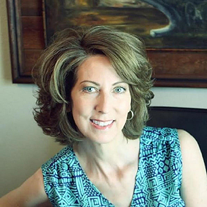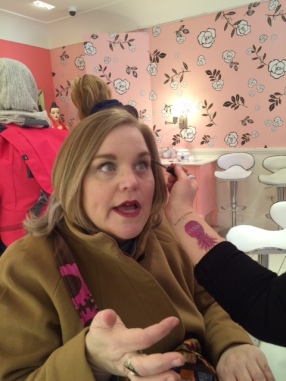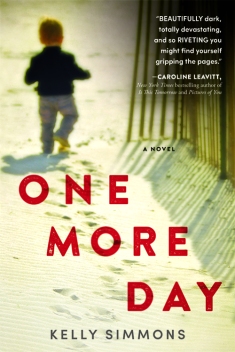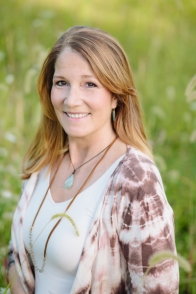Guest Post: Man Oh Man! How Author Marin Thomas Created A Setting For Her Novel
 I was fortunate to read an early copy of The Promise of Forgiveness by Marin Thomas. It’s full of heart, family, and the promise of second chances. It’s her first work of women’s fiction but not her first book. Not by a long shot! Marin has written (sit down now) over 35 romances. When she approached something new, she wanted a special setting. She wanted it to be different from what readers were accustomed to—and different from what her characters expected as well.
I was fortunate to read an early copy of The Promise of Forgiveness by Marin Thomas. It’s full of heart, family, and the promise of second chances. It’s her first work of women’s fiction but not her first book. Not by a long shot! Marin has written (sit down now) over 35 romances. When she approached something new, she wanted a special setting. She wanted it to be different from what readers were accustomed to—and different from what her characters expected as well.
Only an author as skilled as Marin could make a dusty, rough, Oklahoma town full of bristly men a charming place to set a novel!
Today, Marin shares with us how she created Unforgiven, Oklahoma, as well as advice on writing setting that really hit home for me.
Please welcome Marin to WFW!
Amy xo

A Novel Setting: Turning Reality Into Fiction
Guy Town; Austin, Texas
 I love picking a story’s location almost as much as I enjoy fleshing out the characters. More often than not I have to write the entire novel before I get a feel for the setting. With The Promise of Forgiveness the setting fell into place faster than the characters and I believe it’s because the concept for the town of Unforgiven, Oklahoma, had been fermenting in my brain for a long time.
I love picking a story’s location almost as much as I enjoy fleshing out the characters. More often than not I have to write the entire novel before I get a feel for the setting. With The Promise of Forgiveness the setting fell into place faster than the characters and I believe it’s because the concept for the town of Unforgiven, Oklahoma, had been fermenting in my brain for a long time.
I’ve always been fascinated with U.S. history and I enjoy researching the old west. My love of history is one reason I jump at the chance to take a ghost tour when I visit new cities or towns. You never know what nugget of information, name or background of a famous person might inspire an idea for a future story.
In The Promise of Forgiveness the fictitious town of Unforgiven, Oklahoma, came into being in a roundabout way. A few years ago when my husband and I were in Tombstone, Arizona, visiting the famous haunted Bird Cage Saloon, another tourist mentioned that he had taken several ghost tours throughout the state of Texas. He went on to tell us a story about a once famous historical neighborhood in Austin called Guy Town. Weeks later the name Guy Town popped into my head again (when you’re over fifty, things pop in and out of your head at an alarming rate). I Googled Guy Town, 1870-1913, and spent hours reading everything I could find, knowing that one day I’d work Guy Town or the idea of it into one of my stories.
In a nutshell,Guy Town, also known as the First Ward, was a saloon district, comprising eight square blocks in Austin. It was the go-to place for women, whiskey, music and gambling. The boundaries of the neighborhood consisted of Congress Avenue to the east, the Colorado River to the south, Guadalupe Street to the west and 4th Street to the north. Today high-rise office buildings and apartments occupy the area, but its history will never be forgotten.
The saloons in Guy Town were typical of those found in any city of similar size in the West during the mid-to-late 1800’s. The one thing that made Guy Town stand out was that it not only catered to reprobates but also to influential clientele due to The Texas State Capitol located right there in the city. In Guy Town state legislators and other government officials sat side-by-side with common folk drinking, gambling, and dancing with the soiled doves.
For a while Guy Town was just another rowdy red-light district in Texas like Houston’s Hollow, El Paso’s Utah Street, Fort Worth’s Hells Half Acre, Waco’s Two Street, and Frogtown in Dallas, where crime and murders were commonplace. Then between 1884 and 1886 a serial killer, known as the “Servant Girl Annihilator,” terrorized the streets of Austin and Guy Town, supposedly murdering eight victims with an axe. The killer was never found.
On July 15, 2014, the PBS TV show History Detective used historical research and modern techniques like psychological and geographic profiling, to help identify a probable suspect: Nathan Elgin, a 19-year-old African-American cook. Elgin worked near the original crime scenes and had a clubfoot, which was similar to a footprint left by the killer. In February 1886, shortly after the last murder, police shot and killed Elgin when he was caught attempting to assault a girl with a knife. Guy Town was shut down in 1913 after a growing sentiment among religious leaders and women’s groups against prostitution, gambling and alcohol abuse.
There wasn’t a need for a serial killer in my women’s fiction, but the name Guy Town stuck with me. When I came up with the idea for The Promise of Forgiveness, I knew I wanted to create a place that catered to men and challenged the novel’s theme of forgiveness, so I filled the town with oil roughnecks and ranchers—the kind of men who would have visited Guy Town back in the day. Ruby, the heroine in my book, has a deep mistrust of men, therefore I made sure Unforgiven was a place where women weren’t welcome. Often it is only when people are uncomfortable that they acknowledge the need to change.
Unforgiven is a safe haven for men. A place where roughnecks and cowboys check their morals and values at the door. The men have secrets and regrets. Their lives have been built on mistakes and bad decisions. At home the men answer to their wives or girlfriends but just like in Guy Town, there is no one in Unforgiven to hold them accountable for their actions or words.
Ruby is nothing like the wives and girlfriends who are at home waiting for their roughnecks and cowboys. She is as hard as the gemstone she’s named after. She, too, has secrets and has made her share of mistakes and bad judgment calls. The town is a reflection of Ruby—unforgiving and suspicious.
The best advice I can give about setting in a novel is to create a place that keeps your characters off-balance. If you give the setting it’s own voice and viewpoint, it can help guide you in creating richer, more meaningful characters.
What’s the most unusual setting you’ve read in a book?
Marin Thomas writes Women’s Fiction for Berkley/NAL and western romance for Harlequin books. To date she has contracted over 35 projects for Harlequin. The Promise of Forgiveness (March 2016) is her first work of women’s fiction.
 Marin grew up in Janesville, Wisconsin, and attended college at the University of Arizona where she played basketball for the Lady Wildcats and earned a B.A. in Radio-TV. Following graduation she married her college sweetheart in a five-minute ceremony at the historical Little Chapel of the West in Las Vegas, Nevada. Marin and her husband are recent empty nesters and currently live in Houston, Texas, where she spends her free time junk hunting and researching her next ghost tour.
Marin grew up in Janesville, Wisconsin, and attended college at the University of Arizona where she played basketball for the Lady Wildcats and earned a B.A. in Radio-TV. Following graduation she married her college sweetheart in a five-minute ceremony at the historical Little Chapel of the West in Las Vegas, Nevada. Marin and her husband are recent empty nesters and currently live in Houston, Texas, where she spends her free time junk hunting and researching her next ghost tour.
Buy the book! http://bit.ly/BuyPromise
Website www.marinthomas.com
FB https://www.facebook.com/AuthorMarinThomas/?ref=ts
Twitter https://twitter.com/marinthomas
Goodreads https://www.goodreads.com/author/show/323927.Marin_Thomas
Instagram https://www.instagram.com/marinthomasauthor/
Pinterest https://www.pinterest.com/MarinAuthor/
Want to learn more about Guy Town?
http://bob-texashillcountry.blogspot.com/2011/02/few-things-about-old-west-you-may-not.html
The Girl In The Title
I’m not much of a bandwagon jumper. Unless you’re talking eyebrows and I’ve definitely jumped on the eyebrow bandwagon. Did you know eyebrows are the must-have new fashion accessory? Physical features we have always had! Those are the new black!
This is not a beauty blog, I know.
Still…

Yes. I talk with my hands even when someone holds a pointy wand near my eye. I’m a thrill-seeker. (And a comedian.)
This morning I was thinking about book titles and the Girl In The Title trend. I thought perhaps this was a bandwagon worth jumping on. There’s something catchy (and bestselling) about these books. There’s something universal and intriguing and beguiling.
I could surely dream up a Girl Title for my next book, due April 1 to my editor. Wouldn’t that be exciting?
So I made a list for new book and the way I could use Girl in the title. Currently, the working title for novel is Left To Chance (which I love and has multiple meanings, but let’s set good sense aside for a moment).
- The Chance Girl
- The Cemetery Girl
- Last Chance Girl
- New Chance Girl
- The Girls of Chance
Now I bet you’re wondering if this is a novel about gambling, grave-diggers, or prostitutes.
I’ll never tell. (Well, I will, just not quite yet.)
As I was typing out the titles in my Titles note on my phone (yes, this is a running list) hat’s all I could come up with for GIRL. In my list-making, let’s-nail-this-thing frenzy, I cringed.
I strongly dislike the word GIRL.
Nothing against the titles where it fits and works beautifully, of course. Maybe if it made sense in some way, I could put my feelings aside. Publishers have the final say on titles anyway, so I could be eating my words at some point in my career. Nom Nom Nom. They will be delicious.
But, in general, in real life, when the word GIRL is referring to an adult woman, I grimace. I cringe. I contemplate some finger wagging. And I’ve felt this way for longer than Girl In The Title has been a trend. I know plenty of people who fling that word around. I know the term is often meant affectionately, casually, offhandedly, and with no malice. I know the term “mean girl” often refers to a bully no matter the age. But in general, the word just plain bugs me.
“Oh, she’s a nice girl.”
“She’s a pretty girl.”
“She’s a smart girl.”
“She’s a brave girl.”
“She’s a funny girl.”
What they really mean is WOMAN. Young woman perhaps, but not a girl. GIRLS are twelve. I wouldn’t even refer to my twenty-year-old daughter as a girl.
The main character in my next novel, Teddi Lerner, is FORTY-TWO. Teddi Lerner is not a girl.
Scratch Girl Title Goal.
Am I jealous? Am I a bitch? Am I just looking for something to complain about on a Monday morning?
No, sometimes, not at the moment.
I gauged my green meter and this isn’t Envy writing this blog post today. I’m not saying my books would have topped the charts with Girl titles or that books are popular because of Girl titles. There’s an article floating around on the internet somewhere as to why Girl titles work. I don’t doubt it.
It’s okay that the title trend is beyond the reach of my new novel and inconsistent with my own sensibilities. Trend chasers take heed! There are other title trends I do like. I like the long, wordy title trend. I like the one-word title trend. I also like the trend my own novels have set (intentionally). The Glass Wives. The Good Neighbor. The ________ ___________ for novel three?
Perhaps.
Even if Left To Chance is a perfectly appropriate and good title that fits the book and has hidden meaning, I’m sure I’ll chase each of these title trends (and those yet to be recognized) around the block a few times before deciding.
Because I’m a crazy woman.
Have a title for my new novel? Have a Girl Title you love? Do you trend chase at all? How are YOUR eyebrows today?
Guest Post: Author Kelly Simmons Talks About the Perils Of Omniscient POV
 I’m so happy to have Kelly Simmons here today. Not only have I known Kelly for about 8 years, she is tackling a topic close to my heart.
I’m so happy to have Kelly Simmons here today. Not only have I known Kelly for about 8 years, she is tackling a topic close to my heart.
THIRD PERSON OMNISCIENT POINT OF VIEW.
Chill, we’re not saying it can’t or shouldn’t be done except, well, it shouldn’t. Not by most writers. Sometimes it’s effective to have an all-knowing narrator perched on the mantel, but it also has tremendous limitations. And as only Kelly can, she’s going to demonstrate and explain.
When you’re finished being brainwashed reading, check out Kelly’s newest novel, ONE MORE DAY. Details below!
Please welcome Kelly Simmons to WFW and let’s talk omniscient POV in the comments!
Amy xo

The Peril of Third-Person Omniscient Point Of View
by Kelly Simmons
 Kelly Simmons is not fond of third person omniscient. It reminds her of cold, mushy peas force-fed to her by a mother whose only defense was that her own mother did the same , and if it was good enough for her, Maggie O’Callahan, then it was certainly good enough for young Kelly. Why, the only one happy about third person in their household was the dog, Fluffy, who eagerly lapped up the peas offered under the table.
Kelly Simmons is not fond of third person omniscient. It reminds her of cold, mushy peas force-fed to her by a mother whose only defense was that her own mother did the same , and if it was good enough for her, Maggie O’Callahan, then it was certainly good enough for young Kelly. Why, the only one happy about third person in their household was the dog, Fluffy, who eagerly lapped up the peas offered under the table.
Okay, you see what I did there. It doesn’t seem fair to write about the perils of third person in first person, but I feel strongly that third person should come with a warning label. Caution: may feel like cold mushy peas!!
Here’s what happens. Sometimes we are deeply inspired by sagas that span generations and countries. We fall in love with multi-book series that build worlds, require deep historical research and introduce us to hundreds of characters. And as writers, we want this sweep too – and choose third person omniscient.
And by embracing it — there is no way to narrow our scope. We have only breadth ahead — of characters, settings, timelines, and point of view. Goals spiral, outlines mushroom . . . and it becomes impossible to write a summary for an agent, an editor, or even a well-meaning friend over coffee. That’s how you know you are in trouble.
And yet – no one was ever harmed by writing the first pages of a novel two or three different ways.
If you’re just starting out – if you have all the research done and the outline complete and your office is starting to look like a paper-covered cave . . . If, when you try to describe your novel to friends their eyes start to glaze over and they need to take bathroom breaks…
Consider trying third person limited. Consider first person chapters from alternating points of view.
“Experiment early to avoid tears later,” Kelly said, the tracks of her own tears clearly visible on her face. No one knew she’d written eight novels before she’d published one, and had so many abandoned manuscripts she had to buy a separate hard drive to hold them all. Her husband knew, however, and made it his business to never let her forget . . . . .
 Kelly Simmons’ novels have been hailed as electrifying, complex and poignant, and aren’t those nice words? Her third novel, ONE MORE DAY, just came out and everyone calls it riveting, so don’t buy it unless you want to stay up all night reading it. It’s also perilously crafted in third person. She’s a member of The Liars Club, a group of published novelists dedicated to helping fledgling writers. Connect with her here:
Kelly Simmons’ novels have been hailed as electrifying, complex and poignant, and aren’t those nice words? Her third novel, ONE MORE DAY, just came out and everyone calls it riveting, so don’t buy it unless you want to stay up all night reading it. It’s also perilously crafted in third person. She’s a member of The Liars Club, a group of published novelists dedicated to helping fledgling writers. Connect with her here:
http://www.kellysimmonsbooks.com/
https://www.facebook.com/Fans-of-Author-Kelly-Simmons-291343839243/
https://twitter.com/kellysimmons
https://www.instagram.com/kellyasimmons/
Guest Post: Author Yona Zeldis McDonough Talks About Choosing A Setting For Her Novel

You know what they say about real estate, right? Location! Location! Location! Well, I think the same can be true for novels. Where we choose to set our novels is important but we each come to this decision in a different way. Today, multi-published author, my friend, Yona Zeldis McDonough, give us her thoughts on a sense of place for fiction, and how she chose the setting for her new novel, The House On Primrose Pond. I
I was lucky to read an early copy of The House On Primrose Pond and was immediately swept away—first to Brooklyn and then to New Hampshire, in the present and in the past. Yona’s writing is vivid, her characters realistic, with relationships I could relate to — she wrote people I wanted to know. For me, that’s quite often the mark of a good read.
Please welcome Yona to WFW, and tell us about the setting of your book in the comments!
Amy xo

Guest Post: Facing Fears In Writing And In Life by Author Julie Christine Johnson
 What fears do you share with the characters in your novel? What fears or phobias do you give her that are not part of your life but that you want to explore? Today, debut novelist, Julie Christine Johnson shares with us a real life fear that worked its way into her novel, and how she — and her main character — have triumphed.
What fears do you share with the characters in your novel? What fears or phobias do you give her that are not part of your life but that you want to explore? Today, debut novelist, Julie Christine Johnson shares with us a real life fear that worked its way into her novel, and how she — and her main character — have triumphed.
Share your story in the comments and please welcome Julie to WFW!
Amy xo
Guest Post: Persistence On The Road To Publication by Author Phoebe Fox
 Nothing fills my writer’s soul than hearing other author’s road to publication. Or their road to not being published yet. It reminds me that while writing is something we do on our own, our experiences are shared. One for all and all for one.
Nothing fills my writer’s soul than hearing other author’s road to publication. Or their road to not being published yet. It reminds me that while writing is something we do on our own, our experiences are shared. One for all and all for one.
Today, Phoebe Fox shares her journey to publication with us. She uses words like REJECTION and PERSISTENCE. Words every writer can relate to.
Please welcome Phoebe to WFW and share your own stories of persistence in the comments!
Amy xo
Free Contest For Unpublished Authors Of Women’s Fiction
I don’t know any more than this — but how could I not pass along this information? Did you know I was a contest fiend before I was published, or that I met my first agent when he chose my novel’s opening as a winner in one of them? When I was on my first round of queries, those contest wins (I didn’t mention the losses) were part of my bio. I don’t know if it helped, but to me, it meant I put myself out there.
Click this link and check it all out. You have until February 9th!
DEAR LUCKY AGENT CONTEST FOR WOMEN’S FICTION
Go for it! And if you do, let me know!
Amy xo
Intro & Info: Women’s Fiction Writers Association
 Today I’d like to introduce Amy Impellizzeri, my friend (she drove more than two hours with her three kids to come to my book launch in Philadelphia), and the president of the Women’s Fiction Writers Association (WFWA).
Today I’d like to introduce Amy Impellizzeri, my friend (she drove more than two hours with her three kids to come to my book launch in Philadelphia), and the president of the Women’s Fiction Writers Association (WFWA).
WFWA is an international membership organization, not just a Facebook group (although there is one) or a Twitter feed (there’s one of those too). This is a professional organization that not only offers camaraderie but provides information and education to its members (in addition to an amazing annual retreat), all of whom are writers of women’s fiction, or, are agents, editors, and publishing professionals who work with women’s fiction authors and their books.
The reason I’m featuring WFWA today is because I realized that many writers don’t know about it! Woe is me! Can’t let that be!
Please check out WFWA — there are plenty of links to the organization’s page below. And if you have any questions, just post them in the comments. Or tell us why YOU love WFWA.
Just to clarify (pretend this is the fine print), while I am a member of WFWA, this blog is mine, mine, all mine and not affiliated with the organization. Even as the founder of this blog which is dedicated to women’s fiction and its authors, I am thrilled to be part of (though not in charge of, lol) a professional organization with a complementary mission!
Amy xo
Author Interview: Best-selling Author Kate Hilton Says If You Want To Write About Women’s Lives, Tell The Truth
 Happy U.S. publication to my friend, Kate Hilton! The Hole In The Middle grew out of questions Kate asked herself about her own life — isn’t that so often the case with women’s fiction authors?
Happy U.S. publication to my friend, Kate Hilton! The Hole In The Middle grew out of questions Kate asked herself about her own life — isn’t that so often the case with women’s fiction authors?
Today Kate shares with us what it’s like to self-publish, have the book picked up by a Canadian publisher, and then sold in the U.S! Plus, some heartfelt advice for writers.
Please welcome Kate to WFW! And share you thoughts about her covers (or anything else) in the comments!
Amy xo
